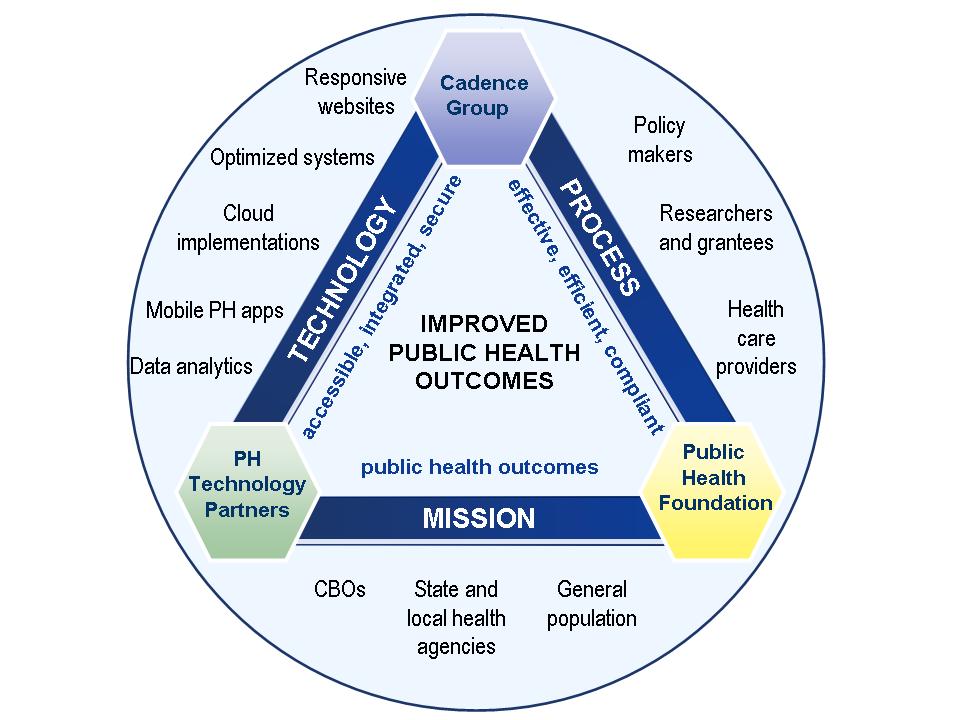The current public health environment has never been more dynamic. Priorities are shifting, budgets are lean and staff is pulled in a million different directions. What if you could find a partner to help develop creative solutions and innovative approaches in areas critical to your operations and to provide unique expertise when you need it most?
The Cadence Group® Public Health Team – Cadence Group, Public Health Foundation and PH Technology Partners – offer a unique understanding of public health policy, practice and the role of critical stakeholders. Our internal collaborative environment with an emphasis on governance, process and technology translates into solutions that meet your needs today and builds a foundation for success in the future.
The diagram depicts expertise within the public health arena that the Cadence Group Public Health Team brings to every engagement.


